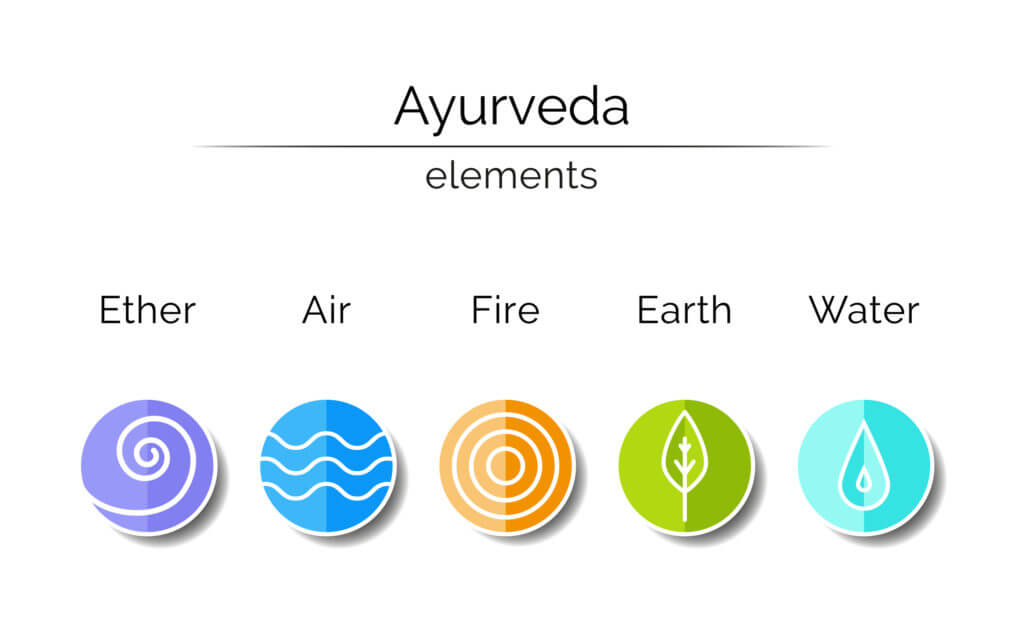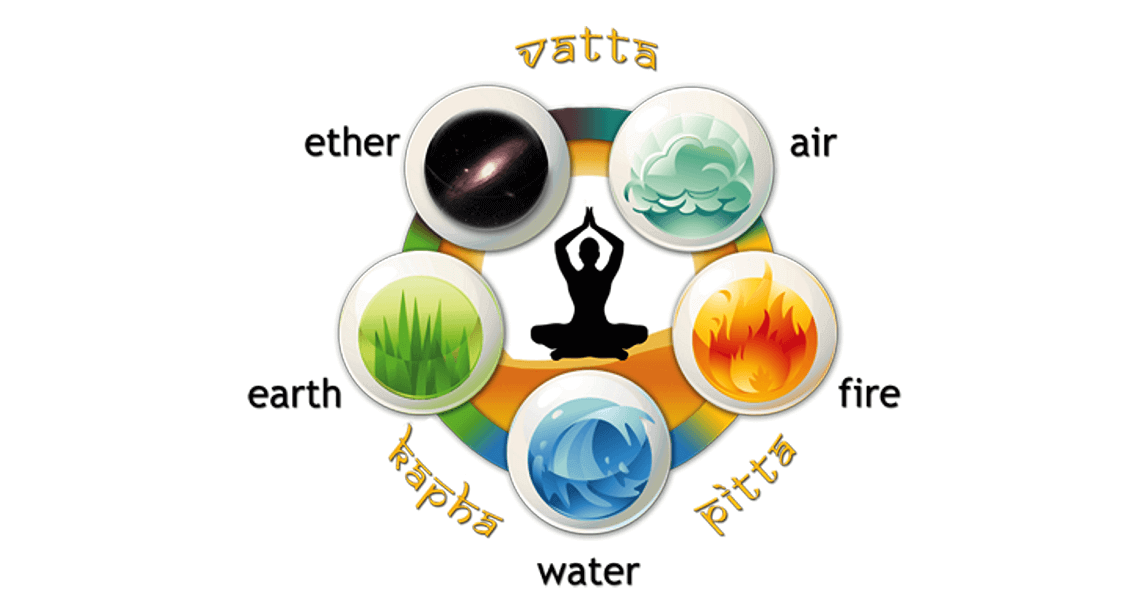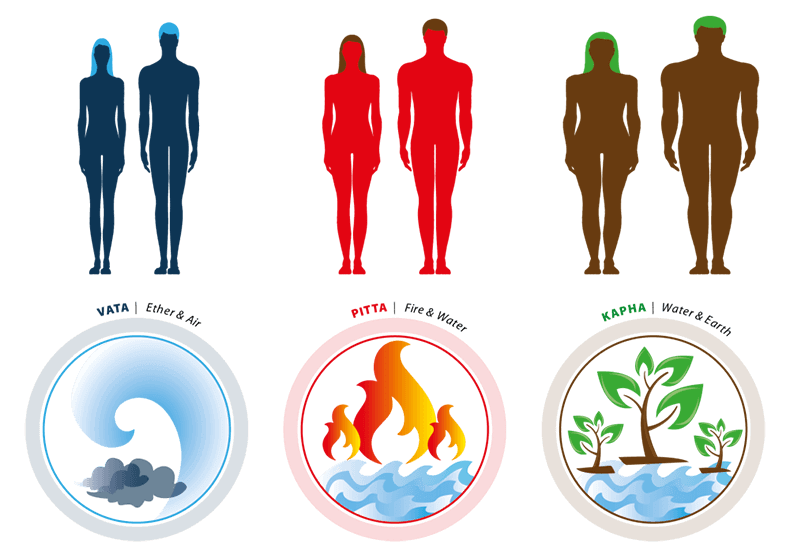WHY AYURVEDA?
Ayurveda is a holistic system of medicine.
It has been tested through time!
No side effects on the body!
It is natural and all ingredients come from nature without having to be produced synthetically in a lab. And last but not the least, IT WORKS!
A BRIEF HISTORY OF AYURVEDA
Ayurveda originated in the hearts and minds of Indian sages, enlightened seers, also known as Rishis, thousands of years ago. Evidence supports Ayurveda to be at least 10,000 years old. The fact
that Ayurveda is still alive, all over the world, speaks to its power to deliver consistent, positive and predictable results.
According to the writings of India’s great sages, there never was a time that Ayurveda was not present in this universe in some form or another. Maybe not in a tangible form, like books and active clinics, but present in the collective consciousness of this universe as eternal principles of unity between all things of the universe; unity between a person and nature, of the changeable but rhythmic nature of the universe, and the unity between body and mind-vehicles for the eternal spirit. Thus, Ayurveda originates from the creative intelligence behind this universe, the same intelligence that makes a flower bloom, a baby smile and planets revolve around the sun.
The name Ayurveda is derived from the Sanskrit words, “AYUR” meaning LIFE and LONGEVITY, and “VEDA” meaning KNOWLEDGE or SCIENCE. It is the “SCIENCE OF LIFE“ that teaches us to live in a truly balanced, natural and harmonious state. Ayurveda often called the “Mother of All Healing.” It stems from the ancient Vedic culture and was taught for many thousands of years in an oral tradition from accomplished masters to their disciples. Practiced for more than 5,000 years, Ayurveda is the traditional natural healing system.
The science of Ayurveda was preached and practiced in ancient times by the holy sages, as revealed to them in their spiritual pursuit. It evolved into a complete health-care system over time. Ayurveda offers a body of wisdom designed to help people stay vital while realizing their full human potential. Providing guidelines on ideal daily and seasonal routines, diet, behavior, and the proper use of our senses, Ayurveda reminds us that health is the balanced and dynamic integration between our environment, body, mind, and spirit. The principles of many of the natural healing systems now familiar in the West have their roots in Ayurveda, including Homeopathy and Polarity Therapy. While modern medicine has pushed this science aside, even though temporarily, the failure of modern medicine to counter ailments without side effects has brought Ayurveda into the forefront of complementary and alternative therapies, for those seeking other health and wellness options.
The five elements represent the most important foundational concept in Ayurveda. More than physical elements, the five elements represent ideas that are fundamental to nature and matter. The five elements are collections of qualities that together form the building blocks of nature. In the body, each element is associated with different tissues and functions. In the mind, the elements are associated with personality characteristics. In the medicines, the elements determine their actions. Ayurveda’s ingredients are simply the basic building blocks of the universe itself. The 5 great elements, the basis of all cosmic creation, are: Pancha Maha Bhootas – SPACE (Akash), AIR (Vayu), FIRE (Tejas), WATER (Apas) and EARTH (Prithvi). Shake up the 5 elements and you have the recipe for creating this universe in all its entirety and variety.

A person is part and parcel of this universe and can hardly be considered in isolation. Ayurveda concurs with the concept that humanity is made of 5 different portions: The Pancha Maha Bhautik:
BODY (Sharira) along with MIND (Manas) and SOUL (Atman) constitutes you and me, THE LIVING, BREATHING, FEELING SELF, (Purusha) in constant interaction with the outer UNIVERSE (Loka).
The self of the person (Purusha) is a continuum of the universal self while the physical body, composed of the FIVE GREAT ELEMENTS (Pancha Maha Bhootas), originates from the Pancha Maha Bhautik and receives nourishment from food and drinks of similar composition. Hence, equilibrium between the internal and external makeup of a person is essential for the maintenance of the living body. Since the individual human being is the miniature replica of the universe; the individual (Purusha) and the universe (Loka) stay in constant interaction with each other and derive and draw materials from each other to maintain their normalcy and balance. This interaction and exchange continue in a normal way, by breathing the air and eating natural, healthy foods. If this interaction is wholesome and complete, the body is in optimum health. When this harmonious process breaks down, a disease state begins. Hence, in Ayurveda the main goal of treatment is to restore the harmonious exchange between individual (Purusha) and universe (Loka).
THREE ENERGY TYPES OR DOSHAS
The “Dosha” theory (THREE DOSHAS) is one of the basic theories of Ayurveda. “Tri Dosha” is a theory for easy diagnosis and treatment. Body constituents (tissues) are always in the process of metabolism, which is a combination of deterioration (catabolism) on one side and construction (anabolism) on the other. Health is maintained by balancing these activities. Metabolism is controlled by a lot of chemical reactions, hormonal activity etc. When these systemic and natural functions get disturbed, it results in various types of diseases. As the basic functions of the
body are innumerable, number of diseases are also innumerable. Even Hippocrates, the father of the Modern System of Medicines accepts the importance of the “Doshas” Theory.
The “TRI DOSHAS” are:
“VATHA”, “PITTHA”, “KAPHA”

In a living being, when the five elements combine to become forces that help a person live then these forces are known as Doshas. Air and space combined to form the force of VATA, which is responsible for all movement in the body, and it governs mainly all nervous functions. There are 80 kinds of possible disturbances due to a Vata imbalance. Pain, stiffness, paralysis, and hypertension, heart diseases – all these are caused by an imbalance of Vata energy.
Fire and water combine to form the force of PITTA. Pitta governs mainly enzymes and hormones. Pitta is also responsible for digestion, pigmentation, body temperature, hunger, thirst, sight, courage etc.
There are 40 kinds of possible disturbances due to a Pitta imbalance. Burning sensations, excessive body temperature, blue moles, jaundice, and pharyngitis are examples of disorders caused by an
imbalance of Pitta energy.
Water and earth combine to form the force of KAPHA. Kapha regulates the other two Doshas. It is responsible for the connection of joints, the solid nature of the body and its sustenance, sexual power, strength, patience etc. Among the 20 possible disturbances due to Kapha imbalance are anorexia nervosa, laziness, mucus expectoration, hardening of the arteries, obesity, suppression of digestive power, etc.

In Ayurveda, we not only recognize these forces (the Tri Doshas) but we also learn to harness them and develop an optimum food and lifestyle program that balances them. When Doshas are in balance, the individual is disease free and when imbalanced – disease begins to grow.
Ayurveda focuses primarily on the concept of true balance. This balance entails not only a correct functioning of systems and organs, psyche and spirit, but also a balanced and creative relationship with our fellow creatures, nature, our family members, our climate, the civilization we live in, our ideals and customs, ourselves and with a higher power. Ayurveda flourishes with details on right behavior, right thinking, right action and right response, right eating, right lifestyle, etc. A healthy individual makes for a healthy society and a body that is balanced holds a spirit that is free – free for spiritual advancement. In Ayurveda, the word ‘Swasthya’ means healthy and is defined as – ONE WHO STAYS IN HIS SELF (‘Sva’). Sva involves the total personality of a human being including Consciousness (Atman), Body (Sharira) and Mind (Manas). Sva also denotes ‘PRAKRITI’ or constitutional normalcy. The concept of Sva is different from person to
person and from the world of ideal blood counts, ideal height/weight ratios and ideal heart rates, etc.
Ayurveda regards everyone as unique, a brand-new painting with its own set of colors. So, what may be normal to one and constitute his or her health may be quite abnormal to another. In Ayurveda, everyone is not the same. It offers the encouragement and tools for self-analysis, understanding one’s native nature (Prakriti) and departure from one’s native nature (Vikruti). Ayurveda recommends a return to nature, to what is simple and intrinsic to a person’s life, and provides information to make responsible choices that promote good physical and mental health.
THE FUNDAMENTAL CONCEPT OF AYURVEDA

The ideology of Ayurveda says that disease occurs in the body because of an imbalance in the body’s energy. In Ayurvedic medicine, there are 3 energy types or Doshas – Kapha, Pitta and Vata.
Everyone has a combination of the Doshas as a part of the body system. When these energy centers are imbalanced, Ayurveda, helps to restore balance to the body. More than massages and therapies, Ayurveda is a vast science of living a Life in tune with Mother Nature and to let the Nature take care of the body! Ayurveda can help us in deciding the right diet, life style changes, and psychological attitude towards our body, which are at the root of all medical problems.
Ayurveda is an ancient system of natural healing that helps:
- Restore balance in the body and mind
- Lower stress and anxiety
- Promote weight loss and maintenance
- Prevent diseases and increase longevity
- Provide a curative effect for many diseases




